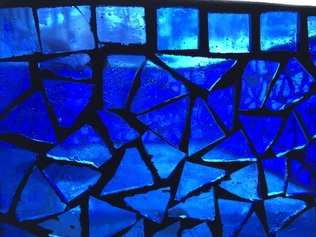| I recently came across a poem by Omid Safi, a columnist for On Being and a Professor of Islamic Studies at Duke University. His poem, Where the Light Enters You, describes the beauty of the broken places, the cracks of our hurt that allow the light in (a references to Rumi here). He uses the imagery of stained glass, prisms of color, |
One of the gifts of imagery such as this, is being able to apply it metaphorically to personal experience and development. With this poem, we are opened to the beauty of our imperfections, our fragilities, our scars. It is an empowering notion, that we can honor where we have been, acknowledge our hurts and mistakes, and recognize that who we have been has made us who we are now.
It reminds me of the Japanese tradition of Kintsugi – the art of repairing ceramics in a manner that emphasizes the broken places. Kintsugi means “golden joinery,” restoring a broken piece with a special lacquer mixed with powdered gold or silver. The piece is made whole again, but not with an effort to return it to what it was or achieve a fixed notion of perfection. Instead, the piece is transformed by reverence and caregiving and by the acknowledgment of its history.
So, what happens when we apply this metaphor to our own selves? Instead of holding on to anger over past injustices or continuing to feel ashamed of mistakes that we have made, what if we honor and acknowledge those difficulties, those cracks, and allow the lacquer of compassion to make us whole again?
By letting love into the broken places, we are transformed. Our scars become beautiful testaments of our histories. We shine with their beauty, and others can find the path to their own healing.
The fractured glass can illuminate the darkened places. The restored bowl can hold sustenance for the hungry. Our hearts cracked open can shine with light and love onto the faces of the world.
For today, this is my prayer.


 RSS Feed
RSS Feed

